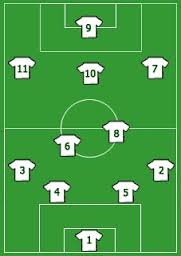After a recent college ID camp, a student-athlete came to me perplexed…
“The coaches kept asking me what position I played and I wasn’t sure what to say.”
This question comes up a lot during the recruiting process. One of the first things that a coach wants to know about a player is their primary spot on the field.
For some kids, the answer is simple, but for others it can be a real challenge. This particular athlete might play striker in one half and outside back in the next. She is incredibly versatile and can literally play anywhere on the field. The ability to help her team wherever she is needed is celebrated by her club coach and teammates. However, when a college coach asked her about her position she wasn’t quite sure how to respond and replied, “I can play anywhere you need me.”
A very honest and straightforward answer, that’s for sure. But with respect to college recruiting, was this actually a smart answer to the coach’s question?
First, a little context with respect to the recruiting process…
College coaches often recruit by position. It’s not rocket science, if they have a talented player in a certain position and that player will be graduating, then they place a priority on recruiting a player to backfill that position. Coaches also often have a style of play in mind when they recruit, and look for kids who will be a good fit for that particular style of play.
So, in these instances, it’s important to specialize and to have a real command of a specific position on the field. That way, if a coach is looking to fill a certain need, well you just might be the player they are looking for.
At the same time, we often hear about the importance of “versatility”. We hear that college coaches want versatile players capable of playing in multiple positions.
Wait, I’m confused…should high school age players specialize in one position or should they look to play in a variety of spots in order to become more versatile?
The answer is BOTH.
I can tell you from experience that versatility was incredibly important during my college career. In my freshman season at Duke, after a few players went down with injury, I got my first start on the team as an outside back and stayed there for six games. In my sophomore year, I came off the bench as a forward and also got some time as an outside midfielder. During junior year, I settled in as the starting right midfielder, where I continued to play for my final two seasons. All of this was possible because as a youth player, I had experienced playing many different positions. The ability to play in multiple spots meant that I was top of mind when there was a need on the field.
Perhaps the reason I settled in as an outside midfielder is because during my club career, that’s the spot where I played the most, and where I was most effective at the highest levels. Weather it was the Oregon ODP team or my club team (3x state champs!), I was a starting outside midfielder. So if you pressed me on where I was best on the field, “outside mid” would have been my answer.
So what does all of this mean for you; the youth player with aspirations of playing in college?
- Become an expert in one position. Know yourself as a player, your strengths, and become so good in that spot that you might be the player a college coach recruits to fill their specific need. When a coach asks you the question, “what position do you play”, be able to answer them by letting them know where you are strongest on the field. Even if you are one of those special utility players that fills multiple roles for your team, it’s important that you understand where you are the strongest. If you need guidance in this, ask one of your coaches whose opinion you trust.
- Experience multiple positions. Weather it’s in training, a friendly scrimmage, or with your high school team…sink your teeth into a position on the field that isn’t necessarily your primary spot. Understand how that position works both offensively and defensively. This will help to add dimension to your game and bring out a certain amount of versatility. Just as it did for me, this may prove incredibly helpful for you when you get to the college level.
When a coach asks you the question, “where do you play”, you should have an answer ready for them.
“My best position is (primary position). I also have some experience playing (other position(s).”
This suggests you are a well-rounded and experienced player. Hopefully during the recruiting process (maybe at an ID camp) you will have the chance to demonstrate your abilities, initially in your best position and perhaps in some other spots as well.

